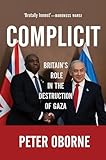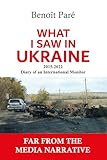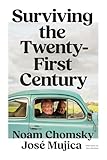
Language of intuition, the language of dreams and visions, the language of mystery — Lakota.
“WE THANK THEREFORE WE ARE … BECOMING.” — TIOKASIN GHOSTHORSE
I deployed a few of the milestones in his life as a way to talk with him:
Tiokasin Ghosthorse is a member of the Cheyenne River Lakota Nation of South Dakota and has a long history with Indigenous activism and advocacy. Tiokasin is the Founder, Host and Executive Producer of “First Voices Radio” (formerly “First Voices Indigenous Radio”) for the last 33 years in New York City and Seattle/ Olympia, Washington. In 2016, he received a Nomination for the Nobel Peace Prize from the International Institute of Peace Studies and Global Philosophy. Other recent recognitions include: Native Arts and Cultures Foundation National Fellowship in Music (2016), National Endowment for the Arts National Heritage Fellowship Nominee (2017), Indigenous Music Award Nominee for Best Instrumental Album (2019) and National Native American Hall of Fame Nominee (2018, 2019). He also was recently nominated for “Nominee for the 2020 Americans for the Arts Johnson Fellowship for Artists Transforming Communities”. He is the Founder of Akantu Intelligence.
The Hopi word “Koyaanisqatsi” translates to “life out of balance,” and it’s also the title of a 1982 non-narrative documentary film by Godfrey Reggio. The film, known for its stunning visuals and Philip Glass’s minimalist score, explores the relationship between nature, humanity, and technology, highlighting the impact of modern civilization on the environment.

We are out of balance, and that is difficult to understand using the language of dominance, this language of the genocidier and the extraction societies. This is the language of transactions and legal documents and of competition and of war.
Here, Tiokasin repeats this statement on the radio and in conferences and during his talks:
“I come from outside the anthropocentric view. We see an egalitarianism in nature. Everything in nature has consciousness, everything is in balance. The Western view ignores this. The concept of domination isn’t even in the original Lakota language.”
I went to an article he penned: Indigenous Languages As Cures of the Earth:
“We all rush in like fools to find more solutions, better remedies, fix-its from the profit makers, and fuzzy warm language to comfort the addicted aspects of ourselves. We make films, Facebook pages, petitions, we ask politicians to do our bidding, we cast votes virtually because we have to save our country, save the world, save the Earth, save the whales, save anything, but our own sanity.”
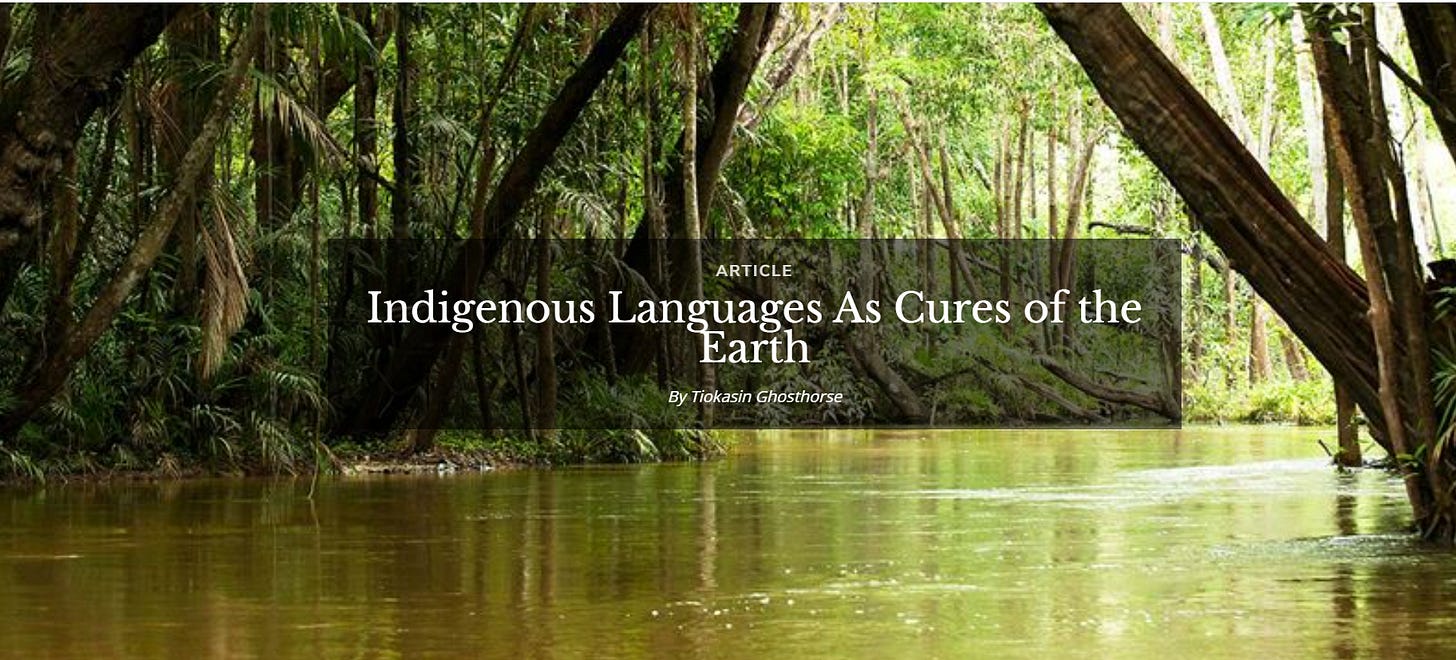
As Vine Deloria, Jr. stated in his seminal book, God is Red, “Unless the sacred places are discovered and protected and used as religious places, there is no possibility of a nation ever coming to grips with the land itself. Without this basic relationship, national psychic stability is impossible.”
We didn’t talk about politics or the Rapist in Chief or much about Palestine. His article (above) starts off looking at the “orange man” and his rape of language and murder of mutual aid and his domination in the way Trump uses business grifting and blackmail and theft and extortion through his ugly white man’s hopes of conquering everything and everyone.
I have done 33 years on the radio, and above all things, that is my work. That makes me an eyapaha, a voice, a communicator: I have been communicating for a long time, and honing that.
I recall in 2019 this western society’s “new” interest in indigenous language: That year, 2019, there were several special events associated with the United Nations’ declaration of 2019 as the International Year of Indigenous Languages. Language shift in Indigenous communities has been increasingly addressed in academic publications, with journals like Language Documentation & Conservation (established in 2006 and first published in 2007) recognized as outlets for such work. Language endangerment issues have also become part of Linguistics 101, the topic now a standard chapter in general linguistics textbooks.
I was a member of Cultural Survival, and used the quarterly in my college classes:
Our Mission
Cultural Survival advocates for Indigenous Peoples’ rights and supports Indigenous communities’ self-determination, cultures and political resilience, since 1972.
Our Vision
Cultural Survival envisions a future that respects and honors Indigenous Peoples’ inherent rights and dynamic cultures, deeply and richly interwoven in lands, languages, spiritual traditions, and artistic expression, rooted in self-determination and self-governance.

There is very little “regular” linguistic scholarship (i.e., research that isn’t specifically about Native American languages and people) framed through Native American protocols and ways of knowing. — by Wesley Y. Leonard [Wesley Leonard’s contribution to the “Sociolinguistics Frontiers” series argues that sociolinguistic approaches to Native American languages are best conducted as part of a project of “language reclamation.” Leonard discusses how past framings of Indigenous languages as “endangered,” while in some ways well-intentioned, replicated the distance of language communities from scholarly research. An emphasis on reclamation—“efforts by Indigenous communities to claim the right to speak their heritage languages”—highlights the role of the community members in the production of knowledge on and the revival of Native American languages.]
Language suppression was/is a key tool in the colonization and cultural domination of Native Americans. European settlers viewed indigenous languages as obstacles to assimilation, leading to policies aimed at erasing native tongues and forcing English adoption.
The boarding school era became a primary method for forced assimilation of Native American children. These schools banned native languages, punished their use, and mandated English-only education, causing profound and lasting effects on indigenous communities and their linguistic heritage.
Tiokasin went to a boarding school, which he talks about in many of his interviews.
Notice how the academics give zero Native American influences on this language of war and slavery: And so an intuitive language doesn’t fit the scale and timeline of a language of death and technology and extraction and theft

Indian Tribes and Linguistic Stocks, 1650
And, this is antithetical to what Tiokasin talks about when he expresses the intuitive language of Lakota, and when he rejects Western materialism and binary thinking and Socratic intellectual dominance and the very idea of “a Big Bang” defining life’s first flicker on earth. Always a bang, a bomb, not mother giving birth, the sound of the drum (heart) and her cooing (the flute) the language of mother earth.
The Heart of the Monster?

Or, this: SOURCE

The Europeans who arrived in Virginia discovered numerous tribes with distinct identities, but the different tribes used only three major linguistic groups: Algonquian, Siouan, and Iroquoian.
At the time of first contact in the 1500’s, Native Americans in the Western Hemisphere spoke 800-1,000 different languages. Based on similarities between them, there were 25-30 “families” of languages.
Linguists compare words for common terms in different languages, such as “child,” to identify original source languages and how they have differentiated over time. The technique offers a clue regarding how long people have been in the Western Hemisphere.
One thesis is that First American (Amerind), Eskimo-Aleut, and Na-Dene are the three major groups of languages in the Western Hemisphere, and those three groups reflect three migrations via Beringia at different times. The time required for the evolution of language differences suggests people have lived in the Western Hemisphere for 50,000 years.
However, genetic evidence suggests that language differences are not based on initial “waves” of migration from Beringea. It is more likely that more than three groups moved out of Beringea into North America, and movements were not limited to three major migrations of people using separate languages.
Perhaps the first people arrived more than 50,000 years ago, but none survived and the first languages brought to North America disappeared with them. It is possible that there were additional migrations by people speaking languages not associated with First American (Amerind), Eskimo-Aleut, or Na-Dene, but languages used by those migrants completely died out.1
When the English arrived in the 1600’s, Native Americans in Virginia spoke languages associated with three major groups. Different tribes spoke different variants of Algonquian, Siouan, or Iroquoian languages
*****
Tiokasin:
I tried to go through the history that I know of and the studies that I have researched from where educational processes started. And usually, when I say young, we’re talking college age or more. And so I find I just finished a semester at Union Theological Seminary in New York and graduate and postgrad students, they either were angry or sad or just, you know, in shock that they have never heard through the whole semester, after years of study, that they’ve never heard the Native history as we know it. We’ve always been overrun with Western historical domination as they see it, that they came here for benevolence, they were brought a civilization, they brought us cars and tech, you know, all these things. It was the ships that came while we stood on the shore, watching the ships come, welcoming, abundance, giving. And then they came and they took what we offered, but they took more. And that’s where we’re at. And now we’re seeing a whole abandonment of spirit and put into the ideas of a dogmatic soul. So when I approach these peoples in these educational institutions often come with those two perspectives, knowing that Native people also are forgetting our own perspective and mimicking the Western educational process.
Again, I’ll go with cultural etymology of this language English. And the word education where does it come from? Well, it comes from scholars and whatever, but the etymology of the word education, what does it mean? It means to adduce or seduce. And there’s different evolutions of the word, and in one dictionary I saw before 1940 says, of course, to adduce or seduce, but it also says “to draw out or lead away from” – and get this – “to lead away from spirit.” And what has it done? Replaced, draw out, or lead away from spirit. So what that’s done is replace it with information and knowledge. And that’s control by domination. Here’s how: So schools started out in the Catholic churches, because the monks, they drew the monks away when they were boys to read and script and to keep this educational process moving. So they were away from nature and only of men’s minds. And so this is how it’s been proceeding since then. So it’s a controlled education where you’re instructed mechanically to get the right answer. Where in Native is that we are shown the possibilities, and we’re able to choose freely about what we’re shown. We’re never told to do this or say that or we were shown because it was a living and is a living language. Learning is a living, it’s not a stagnant informational data bank. So this is how education is to me, and how I view it and how I try to explain it to college age, grad, and post grad.
I’ll insert here some contextualization on language that we did not talk about in the interview.
He did bring up John Taylor Gatto [Gatto envisioned an education system that placed freedom and justice above technology and efficiency], one of my go-to sources:
John Gatto, who won the New York State Teacher of the Year award in 2008, upon his retirement, specifically said, “It takes 12 years to learn how to become reflexive to authority.” And who is the authority? Who is controlling information? Who’s controlling education? Who’s controlling knowledge? And now they want to control Wisdom, and all wisdom means is common sense.

Origins of language suppression (source)
- Language suppression emerged as a tool of colonization and cultural domination in Native American history
- European settlers viewed indigenous languages as obstacles to assimilation and control
- Suppression of native languages became a key strategy in the broader campaign of cultural erasure
Pre-colonial linguistic diversity
- North America boasted over 300 distinct indigenous languages before European contact
- Language families included Algonquian, Iroquoian, Siouan, and Uto-Aztecan
- Many languages had complex grammatical structures and rich oral traditions
- Linguistic diversity reflected the cultural and ecological diversity of Native American societies
European attitudes toward languages
- Colonizers often viewed indigenous languages as primitive or uncivilized
- Some European scholars attempted to document native languages for academic purposes
- Missionaries sometimes learned indigenous languages to facilitate religious conversion
- Many settlers saw native languages as barriers to economic and political integration
Early policies on native languages
- Initial colonial policies varied from tolerance to outright suppression
- Some early treaties recognized the right of tribes to use their own languages
- Gradual shift towards English-only policies in government interactions
- Missionaries established schools that taught in both native languages and English
Boarding school era
- Boarding schools became a primary tool for forced assimilation of Native American children
- Language suppression was a central component of the boarding school system
- The era lasted from the late 19th century through much of the 20th century
Forced assimilation programs
- Government-funded boarding schools removed children from their families and communities
- Schools aimed to “civilize” Native American children by immersing them in Euro-American culture
- Children were often forbidden from speaking their native languages or practicing cultural traditions
- Assimilation programs extended beyond language to include dress, hairstyles, and religious practices
English-only education policies
- Boarding schools mandated English as the sole language of instruction
- Native languages were banned from classrooms, dormitories, and all school activities
- English proficiency became a measure of students’ progress and assimilation
- Curriculum focused on Western subjects with little regard for indigenous knowledge or perspectives
Punishment for native language use
- Students caught speaking their native languages faced severe consequences
- Punishments included physical abuse (corporal punishment, mouth washing with soap)
- Psychological tactics involved public shaming and isolation from peers
- Some schools implemented reward systems for students who reported others speaking native languages
Impact on native communities
- Language suppression had profound and lasting effects on Native American societies
- Loss of language often coincided with erosion of traditional knowledge and cultural practices
- Many communities experienced a generational gap in language transmission
Loss of linguistic heritage
- Many indigenous languages became endangered or extinct due to suppression policies
- Unique concepts and worldviews embedded in native languages were lost or diminished
- Traditional stories, songs, and ceremonies tied to specific languages became harder to maintain
- Loss of language diversity reduced the overall linguistic and cultural richness of North America
Cultural disconnection
- Language barriers emerged between elders and younger generations
- Traditional knowledge systems became harder to access and understand
- Cultural practices and ceremonies lost nuance when translated into English
- Many Native Americans experienced a sense of alienation from their heritage
Intergenerational trauma
- Forced separation and language suppression created lasting psychological impacts
- Many survivors of boarding schools struggled to reconnect with their families and communities
- Shame and stigma associated with native languages persisted across generations
- Trauma manifested in various social issues (substance abuse, domestic violence)
Resistance and preservation efforts
- Native communities developed strategies to maintain their languages despite suppression
- Resistance efforts often operated in secret to avoid punishment
- Language preservation became a key aspect of cultural revitalization movements
Underground language practices
- Families and communities continued to speak native languages in private settings
- Secret language lessons were conducted away from the watchful eyes of authorities
- Code-switching and mixing languages helped preserve vocabulary and grammar
- Some communities developed new forms of communication to maintain cultural ties
Elder-led teaching initiatives
- Elders took on the role of language keepers, preserving vocabulary and stories
- Informal language classes were organized within communities
- Elders worked to document languages through oral histories and recordings
- Mentorship programs paired fluent speakers with younger learners
Community language revitalization programs
- Tribes established language immersion schools and after-school programs
- Community-wide events promoted the use of native languages
- Language camps and cultural retreats provided intensive learning environments
- Partnerships with linguists and educators helped develop teaching materials and curricula
Government policies and legislation
- Shifts in federal policy gradually recognized the importance of native languages
- Legislation aimed to support language preservation and revitalization efforts
- Implementation and funding of policies remained challenging
Indian Reorganization Act
- Passed in 1934, marked a shift away from assimilation policies
- Encouraged tribal self-governance and cultural preservation
- Provided some support for native language use in tribal affairs
- Did not fully address the damage done by previous language suppression policies
Native American Languages Act
- Enacted in 1990, officially recognized the right to use native languages
- Declared U.S. policy to preserve, protect, and promote Native American languages
- Required federal agencies to consult with tribes on language matters
- Lacked substantial funding mechanisms for implementation
Language immersion program funding
- Various federal grants became available for language preservation efforts
- Administration for Native Americans provided funding for language programs
- Department of Education supported bilingual education initiatives
- Challenges remained in securing consistent and adequate funding for long-term programs
Modern language revitalization
- Contemporary efforts focus on reversing the effects of historical language suppression
- Technology and new educational approaches play key roles in revitalization
- Challenges persist in creating new generations of fluent speakers
Technology in language preservation
- Digital archives store recordings of native speakers and traditional stories
- Language learning apps and online courses increase accessibility to language resources
- Social media platforms allow for language practice and community building
- Virtual reality and augmented reality technologies create immersive language environments
Bilingual education programs
- Schools on reservations increasingly offer bilingual curricula
- Some public schools in areas with large Native populations introduce indigenous language classes
- Dual language immersion programs aim to create balanced bilingualism
- Teacher training programs focus on developing qualified bilingual educators
Challenges of language revival
- Many languages have few or no remaining fluent speakers
- Limited resources and funding for comprehensive language programs
- Competing priorities within Native communities (economic development, healthcare)
- Balancing traditional language use with modern vocabulary and concepts
Legacy of language suppression
- The effects of historical language suppression continue to shape Native American experiences
- Language revitalization efforts are seen as crucial for cultural healing and empowerment
- Ongoing debates about language rights and education policies persist
Effects on cultural identity
- Many Native Americans struggle with questions of authenticity and belonging
- Language proficiency often viewed as a marker of cultural connection
- Efforts to reclaim language tied to broader movements of cultural revitalization
- Multilingual identities emerging as Native Americans navigate between cultures
Linguistic diversity today
- Of the estimated 300 pre-colonial languages, about 175 remain in use
- Many surviving languages have only a handful of elderly speakers
- Some languages (Navajo, Cherokee) have seen successful revitalization efforts
- New forms of indigenous languages emerging through creolization and mixing
Ongoing struggles for language rights
- Advocacy for increased funding and support for language programs
- Push for recognition of indigenous languages in public spaces and government
- Efforts to incorporate native languages into mainstream education curricula
- Legal battles over language use in voting materials and public services
*****
Again, back to this violent rather immature language, English:
In the Lakota/Dakota/Nakota nations we have no word or concept of domination. You look at Mother Earth and the concept applied to her is domination, and that’s patriarchy. It is basically not in touch with Mother Earth.
Patriarchy destroys our ability to have any intimacy with her. Any other kind of thinking is shoved aside, and distanced, and called indigenous—which means poor people over there. Indigent is poor and genus is race or people, and that is the etymology of the old Latin word. The new meaning of the word indigenous was glossed over to mean, oh, it’s the place that you are from.
There are 427 words in the English language to describe self, and in Lakota, there are maybe one or two, and those are in relationship with something. With English, we have so many layers we have to peel off to get back onto the Red Road of relationship. When you say “I” that is the first word that separates.
Here’s an article I used in one of my writing classes: Countering Dominant Native American Narratives and Re-Imagining Community Development
Quoting: To give some context here:
What first piqued my interest in using narratives was the reaction I felt after watching the documentary “The Canary Effect.” The film, which addresses a myriad of issues that continue to pervade the Native American community presents an image of Native Americans in a single facet: people dealing with alcoholism, poverty, and the lasting effects of the boarding school era. While this information is critical for people to know, this image is often the only one presented to the majority. As I began to think of an approach to give a more comprehensive overview of modern Native American life, I quickly thought of the “Under My Hood” spoken word event we attended the previous weekend. Inspired by the various stories, I was immediately drawn to this type of storytelling and hope to implement it within my own community–I want my peers and the general community to have the opportunity to hear multiple facets that make up the modern Native American experience and identity. From that night, I was able to come up with my own narrative that chronicles my journey as a Navajo woman using the “Under My Hood” format.
Under my hood is frustration
It is frustration that spans several generations
I carry the pain felt by my ancestors, for I continue to be told my culture is subpar and my history irrelevant. I am frustrated that my people are seen as relics of the past, as imaginary figures in headdresses and buckskin that only exist in western films and dusty textbooks. If only they knew, I tell myself. If only the world could see what I have been privileged to experience would they finally realize how entrenched we are in modern society while still maintaining our unique identities and culture. This frustration is often exacerbated by comments like “You don’t look Native American” or the idea that my education, perspective, and experiences somehow makes me different from other Native Americans. Under my hood is pride. It is pride in everything society tried to make me feel ashamed of. When I look at my hair, hair my people were forced to cut because it was seen as the mark of savagery, I don’t see shame but wisdom. I see the wisdom passed down from my mother and grandmother. I see my traditions, my history, language, and culture society has tried to erase but has failed to do because their greatest mistake is not realizing my people are indestructible. It is a future where my generation stands up and says, “We have had enough!” and we reclaim our own stories that have often been told for us instead of by us.
Finally, under my hood is hope. It is hope that I can use my education to empower my community, give a voice to the silenced, and use this gift to help my people break the chains of colonial oppression. As I continue to navigate this chaotic world I carry the hope that I will be able to successfully walk the tightrope between tradition and modernity, but I am not walking this path alone. I have my ancestors beside me, for I am their greatest dream. — Emily McDonnell
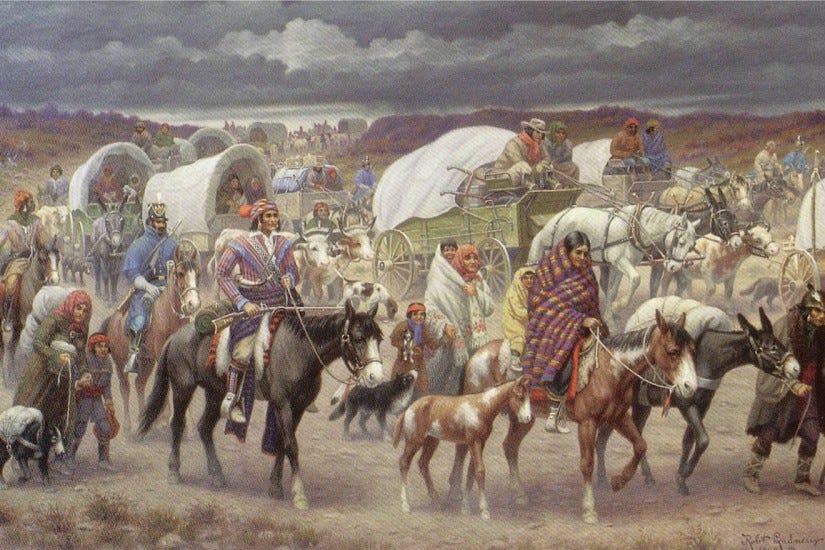
We have a saying that we kind of reinterpret into all my relations, it’s called mitakuye oyasin, and really mitakuye oyasin, you cannot feel, you cannot think in dualism, you can think only in inclusion. And if there is no word for exclusion in our languages, then you see how further along we’ve come in that process of evolving our spirits into understanding the transformation, the complexity, the simplicity, that is complexity, because people want to think that they have to down dress the idea of complexity so it’s simple. But yet, if you’re speaking the languages of the Earth, like I said, Earth doesn’t lie. And so your languages are along the complexities of the Earth and you see how many, so many variants of species and how to deal with the weather, in all of that is to not think that we’re in control of it, or even that God made this for us. You see.
So once we let go of those domination thought processes, that more than two dimensional thought process, you wake up and they come and you’re like, “Wait now, we can’t know all of this, we’re spending our time gathering information without ever experiencing it.” So we are stuck with the ideas of information and knowledge and then we refer to “Well, someone who’s tenured in educational processes is wise now because he’s tenured, he’s older, she’s older. And so they’re wise.” And yet those textbook knowledge keepers are not ever experienced. They may go out and study here and there, but when you have Indigenous peoples always in the rhythm of the Earth, they’re not educated. But yet, in a sense of taking this concept of education and trying to put it on Native people, it’s like injecting with them with something, right, and they’re not ever going to understand it, because they’re already too far ahead of education that this system requires in order for you to get ahead, but with the Indigenous processes of Earth, it doesn’t need education, it needs experience with and that way, we spend all of our time trying to reinterpret something, that we can’t wrap around our minds, and we’re stuck in the same cycle of cause and effect. How do you do this? And what do you do? And that’s a point of privilege that we come from is that, I have a question, you answer it for me and you tell me how to do something so I can take it easy the rest of my life type of thing. But yet we avoid the suffering, we avoid the pain, we avoid the grief, as you said. — Tiokasin Ghosthorse
Globalization is mainly driven by the sole superpower now – the United States and its ally the United Kingdom. The result is that English has become the first truly global language in human history. This global language and other lesser international languages are causing language shift and death at an unprecedented scale.
Overtly violent words that are used with admiration and mean “being successful”:
Slaying
Dominating
Crushing it
Nailing it
Killing it
Conquer
Blowing them away/Blowing it out of the water
Kicking ass and taking names
Dark ways we talk about ourselves and life:
“It kills me.”/”It’s killing me.”
Kicking yourself
Beating yourself up — Wow. I just really don’t think we think about what we’re actually saying. Giving yourself bruises, a black eye, maybe cuts or scrapes. I do think verbally abusing yourself is incredibly serious, so maybe this expression gets a pass for an appropriate level of gravitas.
Pain in my ass — Often said of children, unfortunately.
No pain, no gain
“I’m a hot mess.”
“I’m dying to go there.”
“If he texted me back, I’d just die!”
“It’ll be the death of me.”
2024 additions:
Onslaught — Dictionary definitions 1 and 3 are “a violent attack” and “an attack; an onset; esp. a furious or murderous attack or assault.” We mostly use definition 2: “an overwhelming outpouring.” Just a few minutes ago I went to mention “an onslaught of information” and thought, better add it to the article.
Ramming/shoving something down your throat (like an idea) See also:
Shoving your face in it/rubbing your nose in it
Overkill — “The destructive use of military force beyond the amount needed to destroy an energy,” “excessive use of force in killing,” “elimination… by hunting or killing.” Maybe this phrase is overkill?
Butchering — When we retell a story or joke in a way that’s not quite faithful to the original, we use an analogy about how we’ve dismembered it, ripped it limb from limb as its blood drains away
Letting someone off the hook — because… they were squirming on a hard, sharp piece of metal like a worm, damaging their soft skin and internal organs until we changed our mind and decided to free them?
Demolished — If you eat your food fast, you might say you demolished your burger (demolish: to tear down, raze, or break something to pieces, or to do away with or destroy something)
Head off at the pass — synonyms include ambush, block, or thwart
It hit me like a freight train/ton of bricks
Broke — in every other context than financial, this means broken/damaged/harmed
Master gets its own paragraph. This one I primarily think of in terms of gender. It’s unambiguously male and I don’t know of any corresponding positive female term in our society that would make sense and be understood as a substitution for mastering a skill, masterclass, mastermind, mastery. But there’s also a sense of domination and forced subjugation with this word. A master is what we call someone who commands others to do things and can punish them if they don’t. It’s the main English word used for an owner of slaves, who are controlled by violent force. A master doesn’t partner with, co-create, or negotiate. Though there are surely exceptions, the core of being a master is violent. (from, The casual ultra-violence of the English language)
*****



One of the recent broadcasts of his show on this radio station, KYAQ, was with a returning guest: Steven Newcomb.
“We give it names such as: civilization, empire, imperial, conquest, conquer, conqueror, invade, capture, vanquish, subjugate, enslavement, slavery, subjection, domestic violence, and so forth, but each of those names simultaneously maintains and yet hides or cloaks the domination. Steven Newcomb is a syndicated columnist, film producer and author of Pagans in the Promised Land: Decoding the Doctrine of Christian Discovery.”
The doctrine of discovery is the international legal principle that Europeans used to claim the lands of Indigenous peoples and nations and to assert sovereign, commercial, and diplomatic rights over Indian nations. The doctrine has been a part of Euro-American law in North America from the beginning of Spanish, French, and English exploration and settlement. Not surprisingly, the English colonies, the American states, and the United States adopted this legal tenet as the guiding principle for their interactions with Native nations. The US Supreme Court expressly accepted discovery in 1823 in Johnson v. M’Intosh. As you might imagine, this case and the topic of discovery have been written about and analyzed extensively.
The basic message I glean from Newcomb’s analysis of cognitive theory and metaphor is that Europeans just made it up, and that discovery was just an excuse for Euro-Americans to do what they already wanted to do: confiscate all the lands and assets of the Indigenous peoples of the New World. I agree 100 percent with that statement. The doctrine of discovery is nothing more than an outright and bald-faced attempt to justify claims of superiority and domination due to differences in religion and culture. I disagree, however, with Newcomb on one minor point. He states that most federal Indian law commentators have ignored or are unwilling to address the religious aspects of discovery. He spent a decade trying to engage federal Indian law experts in meaningful discussions on the religious dimensions of Johnson and found most of them unwilling to focus on religion and the implications of Christianity in Johnson (xvi, 139n3). That was obviously his experience. However, in my experience, many Indian law commentators have addressed the relationship of Christianity and discovery at length. (review)
Listen to that one, too: LINK.

I hope to bring you all another show with Tiokasin.



